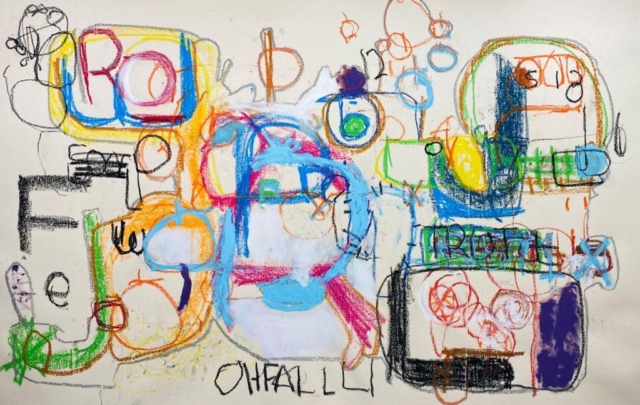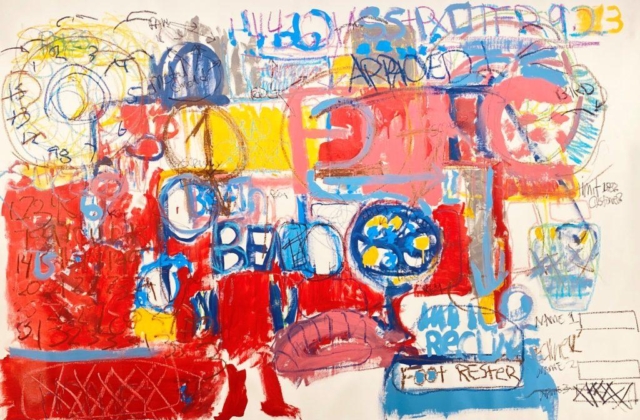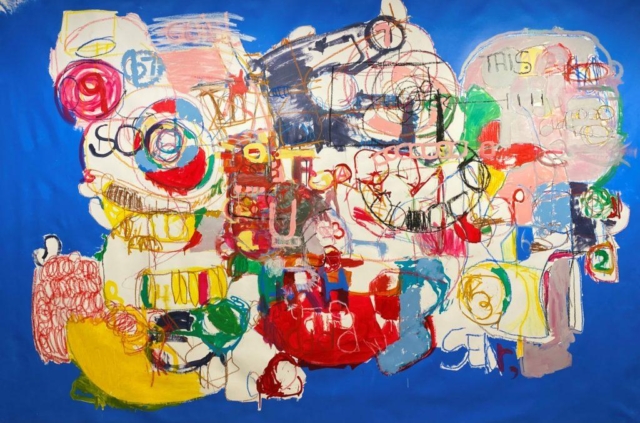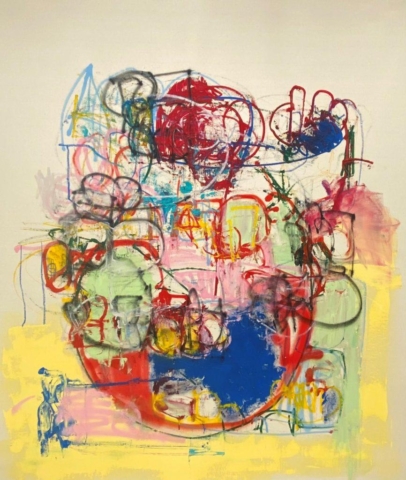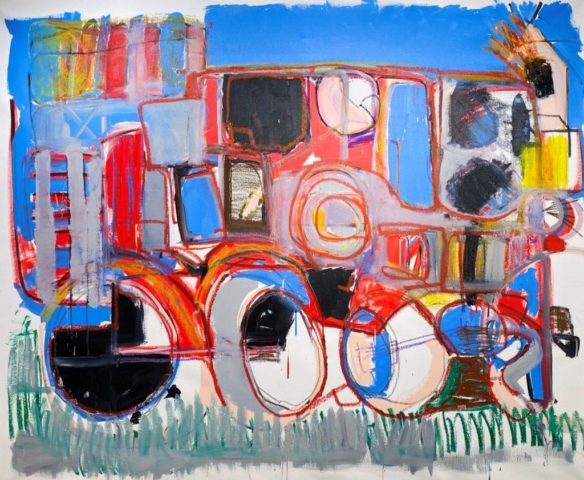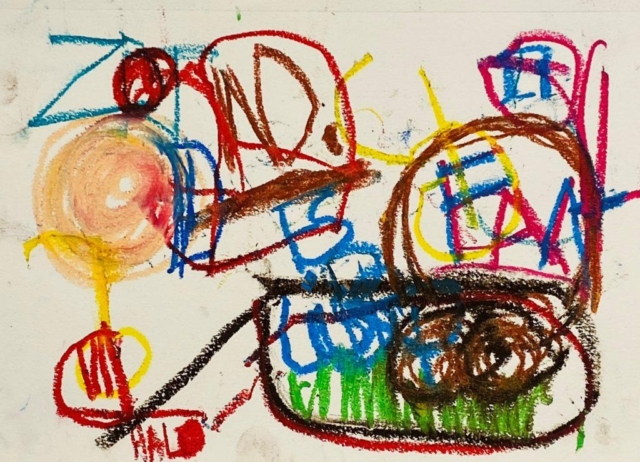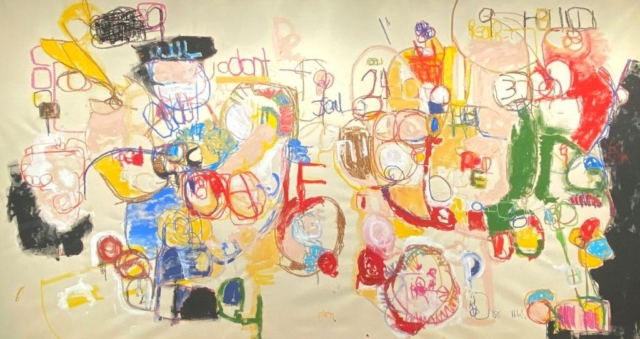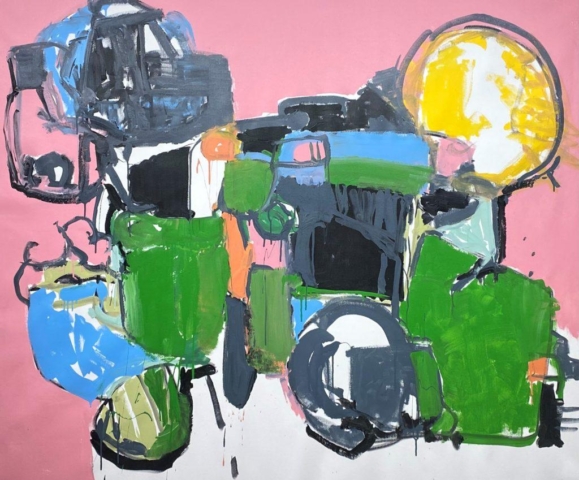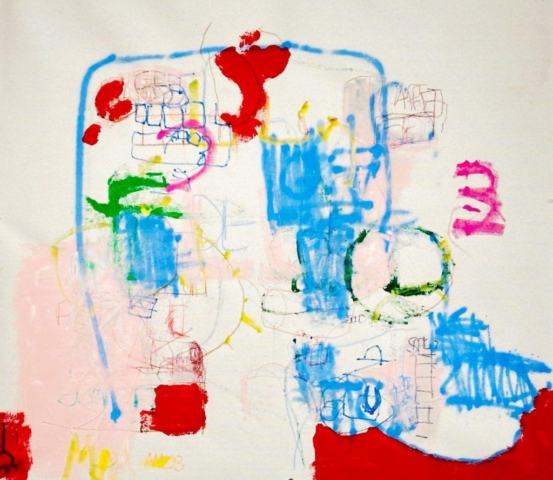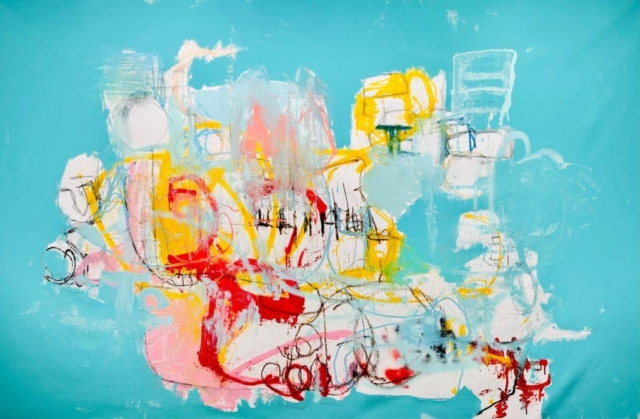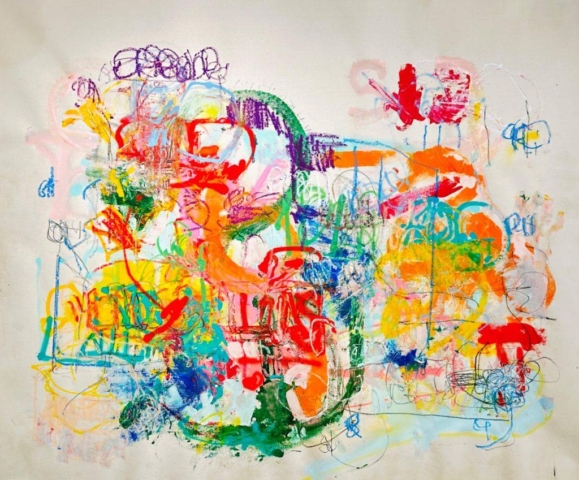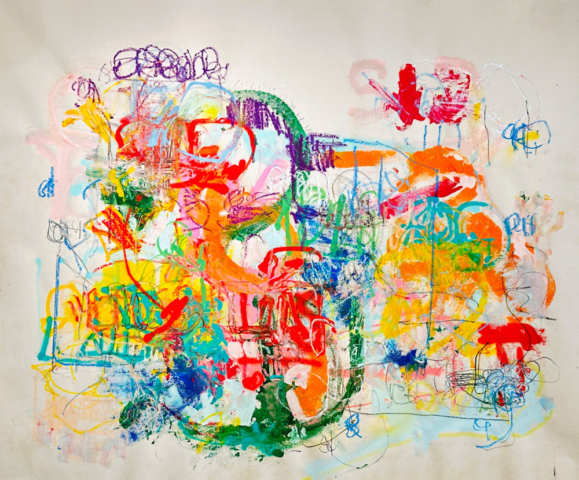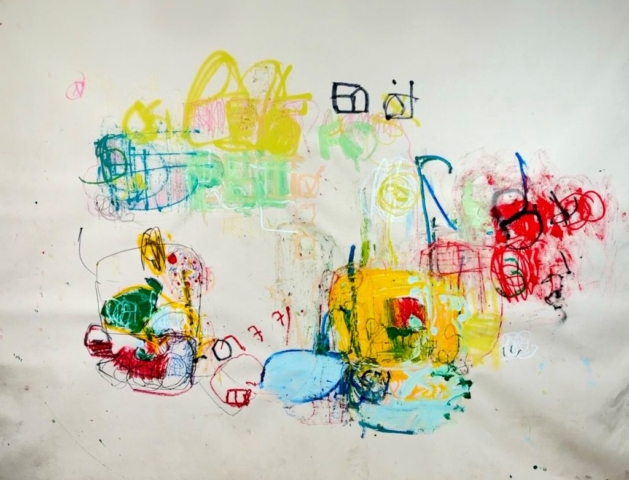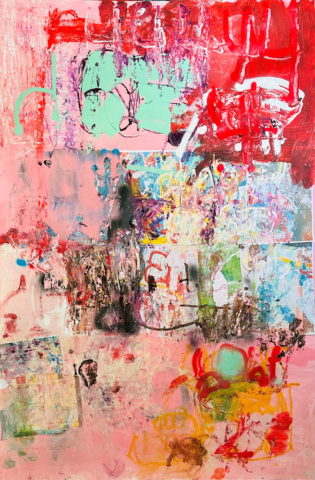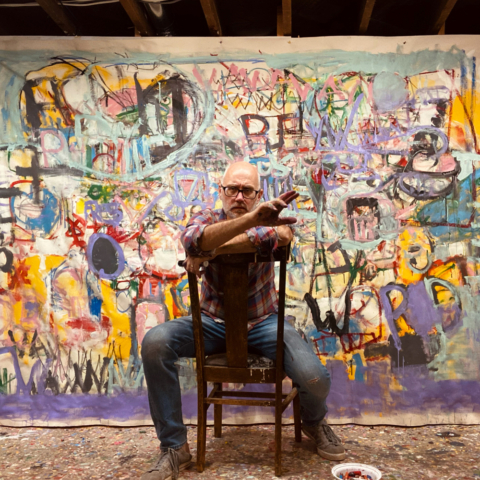Tim Nerheim-Chereck
Interview by Jimon
1-Where do you currently live and create? I live in Portland, Oregon and primarily work in my home studio but occasionally at our cabin at the base of Mount Hood and also on some remote land in the Columbia River Gorge where I’m developing a few large installation pieces.
2- How would you describe Tim Nerheim-Chereck? I’m a pretty easy going person but very passionate about art and music and love to discuss with anyone who’ll listen my art addictions and strong opinions about them. I’m a bit of a dreamer and tend to find myself over-thinking everything but I’ve discovered that those somewhat negative traits have become assets as a painter. I’m a true believer in art and its power to transform and am very fortunate and grateful to be able to share my ideas and have them experienced, listened to, challenged and appreciated by some.
3- What is your earliest childhood memory of making art? I was clearly obsessed with experiencing music by the time I was 4 or 5 years old and wrote my first compositions for cornet by around third grade. I had a very short attention span, and still do, so I would be quick to move on to the next creation. I found myself writing music in my head constantly as an adolescent. I was always very creative and had quite the imagination but didn’t have the ability or patience to finish much of anything as a kid.
4- What did your path to becoming an artist look like? I always dreamt of being a rock star, and had some success in achieving that goal, but obsessively composing classical music really took over when I was in my 30’s. I had fought depression for most of my life and after being in therapy for quite a few years was diagnosed with bi-polar 2. I was honestly terrified that I would lose my ability to compose music if I were to get treatment, however after holding off for a long time I realized I needed to make a change. It was quite the profound experience almost immediately after getting on medication. It was challenging in that my creative engine wasn’t driving me any longer and it took time and more therapy to truly gain balance but I came to realize I was able to turn it on when I wanted to. A decade later I finally picked up a paint brush and became a painter for the first time in my life at 49 years old.
5- Did you study art or is it inherent? Since I can remember I’ve been a passionate fan of art and music and was perhaps more emotionally in tune with the arts than most but never had much in terms of formal training. As an adult I became quite interested in painting, particularly the abstract expressionists and spent a fair amount of time learning about the movement and the lives of those artists. Visiting museums became an essential pastime for me and my family but the need to create art seems like it’s always just been there for me.
6-What is the inspiration behind your creations? It’s really just about the moment I’m in when I’m creating the work. There may be specific things happening in my world or the world in general that gives some underlying motivation to the piece but those things don’t typically become clear to me until after the work is complete. For lack of a better term I call the process momentism. It’s simply a physical representation of the moment that I’m living during its creation.
7-What emotion do you expect to be on people’s faces when they look at your art? I don’t have any expectations of those who view my work. I encourage those who are gracious enough to look at my art to find their own moment and own meaning. I’ve had many people tell me what they see in my work and I am honored that they see something but it’s likely not what I saw or felt when I created it or when I re-explore the work myself. My work is born in my moment but lives a different life each time it’s experienced and it’s not my place to lead them down a certain path.
8-How do you pick the colors you use in a painting? I just arbitrarily grab a color and go for it. I let the colors ask the questions, talk to themselves and let them lead me through the painting.
9- Is there any pre planning involved in your paintings? Other than the size of the canvas there is no planning. There was a time that I used to project and trace line drawings on my canvases but I eventually felt that was too limiting and became brave enough to do it all at once. I know find comfort at being in a state of total risk of ruining a painting. It’s addicting and liberating to be in a complete state of flow without the resistance of expectation knowing that you’re always on the edge of disaster. Disasters do happen often but not often enough to quit.
10-Do you have a place/person/thing that you visit for inspiration? I really don’t. Painting is a very internal and selfish thing for me. There have been periods of time over the past few years that I simply couldn’t paint because I didn’t feel that I could or deserved to go there. It has become so much about the specific moment I’m personally experiencing that I do have to be in the right frame of mind to create. I need to be in the right emotional space to allow the moment to happen and that comes from within.
11-When you are not painting where would someone find you? Probably sitting on the deck at my cabin endlessly discussing art with my wife who is my partner in crime and muse. She’s incredibly patient and always been so supportive of my path as an artist. I can’t believe how tolerant she is of the weekly existential artist crisis that I typically need help navigating. And anywhere my kids and dogs are.
12-If a movie was to be made about your life, where would it ideally take place and who would be the actor playing your part? Insert middle aged, white, bald, bearded male actor wearing flannel and a Red Sox cap living in the shadow of Mt. Hood. I think people mistake me for Moby or Michael Stipe from time to time so I’m always wearing my ball cap. I actually do have a screenplay that I’ve been working on for some time that has some poetic references to my life however it’s based in childhood so the main character would likely have hair. Happy to discuss with anyone who’s interested.
13-How do you describe success as an artist? I literally had zero expectations when I started this as a hobby in early 2020. When I got a few dozen strangers to like my early pieces and follow me I felt like a real success and I truly was. I’ve tried to remember that as I’ve grown as an artist and gained more followers and attention. If you move just one person with your work you are a success. If you move yourself with your work you are a success. Art is not a business. The business and the following is secondary to being true to your craft and believing in what you do.
14-Name three things you can’t live without in your studio? Bare floors, oil pastels and my old couch to take naps on.
15-If you could have dinner with 3 artists living/dead who would be at your table? I’m supposed to say Rothko, Rauschenberg and Frankenthaler but in reality it would be Jenny Brozionski, Sebastian Helling and Eddie Martinez. We live in an incredibly unique time when we get to see what the greatest living artists are making today. The same day we are creating work right alongside them.
16-How would someone find you on Social media? Thee evil Instagram @tim.nerheim_chereck
17-Please name the first thing that comes to your mind while reading the following:
Art= Life
Food= Plants
Sports= Baseball
Politics= Garbage
Poor= Unnecessary
God= not a solid tattoo choice
Rich= with life
Luxury= unfortunately a home, food, education
Sex= spectrum
Picasso= another poor tattoo choice
Religion= the most uniquely personal human thing, other than art
Back to List